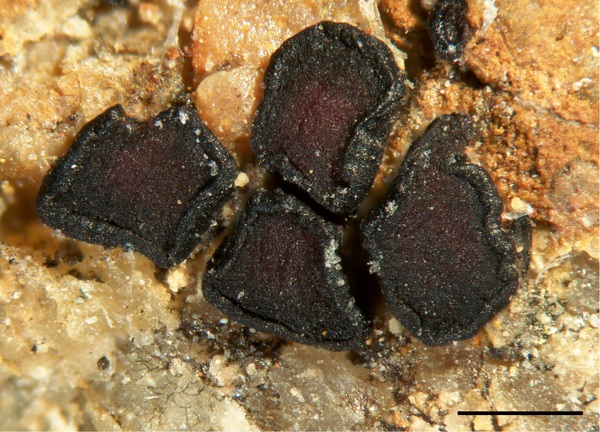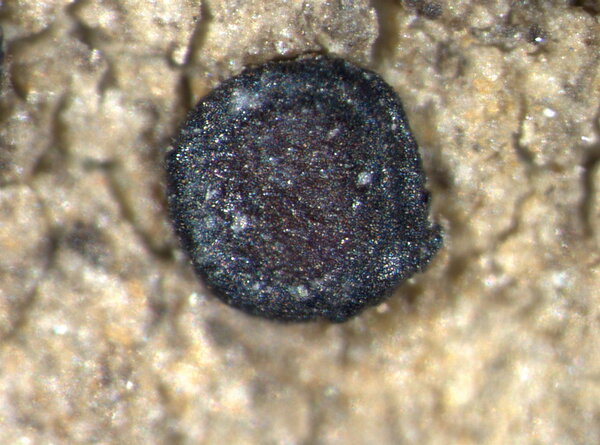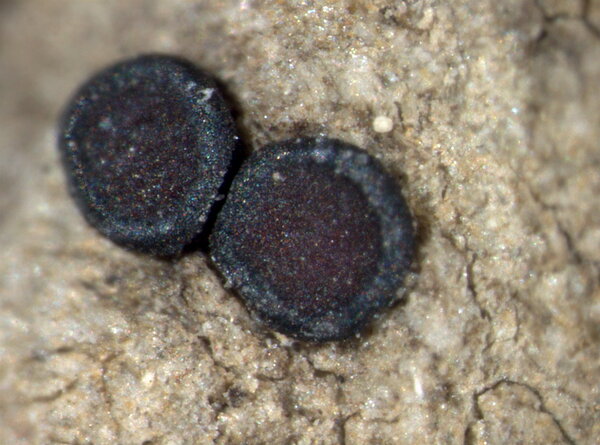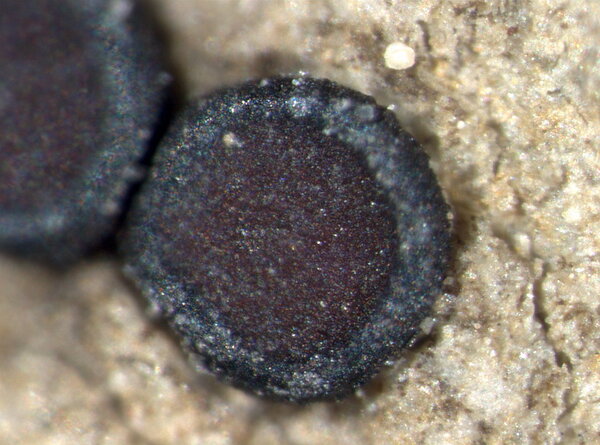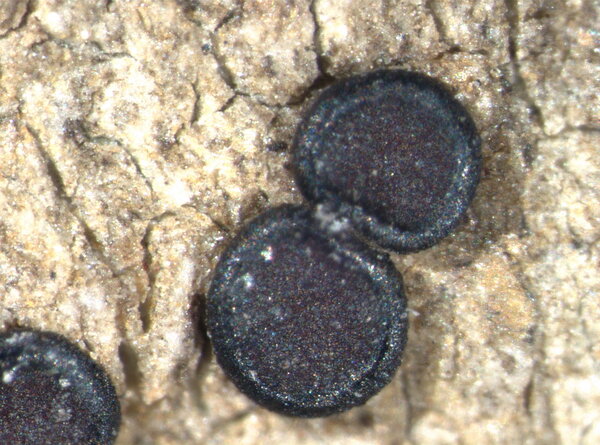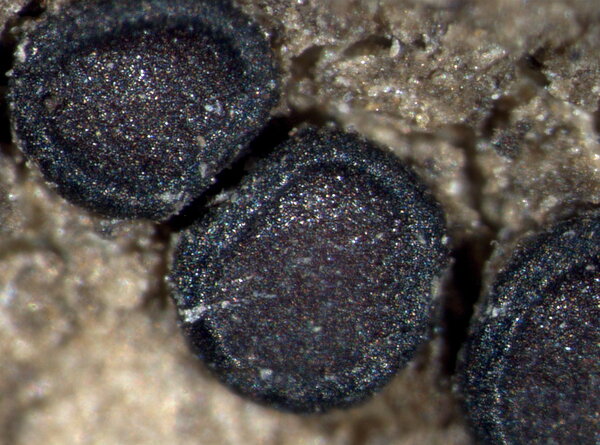Sarcogyne oceanica K. Knudsen & Kocourk.
in Knudsen & al., Rev. British and Irish Lichens,12. Acarosporaceae: 23, 2021
Synonyms:
Distribution: N - Lig (TSB 15252). C - Sar (Knudsen & al. 2021).
Description: Thallus crustose, endosubstratic and poorly visible, usually consisting of scattered algal cells surrounded by 1-2 μm thick hyphae among substrate crystals, K/I–. Apothecia lecideine, stipitate, (0.3-) 0.5-1 mm across, round to irregular in outline, dispersed, with a dark reddish brown to almost black, epruinose, flat to finally convex disc barely changing colour when hydrated, and a black, smooth, slightly raised proper margin which often tends to curl inward. Proper exciple 80-100 μm thick, of radiating, 1-1.5 μm thick hyphae, the outer layer black, 20-80 μm thick, the inner layer colourless; epithecium c. 10 μm high, reddish brown: hymenium colourless, (50-)65-100 μm high, euamyloid, I+ persistently blue, K/I+ blue; paraphyses coherent, 1-1.5(-2) μm thick at mid-level, sparingly branched in upper part, the apices not or only slightly expanded; hypothecium colourless to yellowish, continuous with the stipe; subhymenium 20-30 μm thick, K/I+ blue, usually with oil drops. Asci c. 100-spored, clavate, strongly thickened at apex, the apical dome K/I-, the outer coat K/I+ blue. Ascospores 1-celled, hyaline, narrowly ellipsoid, 4-5 x 1–1.5(-2) μm. Photobiont chlorococcoid. Spot tests: thallus K-, C-, KC-, P-, UV-. Chemistry: without lichen substances.Note: a recently-described species of siliceous rocks, mainly in the Mediterranean and submediterranean belts, also known from Greece and the British Isles, but probably more widespread, as frequently confused with S. hypophaea.
Growth form: Crustose
Substrata: rocks
Photobiont: green algae other than Trentepohlia
Reproductive strategy: mainly sexual
Most common in areas with a humid-warm climate (e.g. most of Tyrrenian Italy)
Pioneer species
Commonnes-rarity: (info)
Alpine belt: absent
Subalpine belt: absent
Oromediterranean belt: absent
Montane belt: absent
Submediterranean belt: very rare
Padanian area: absent
Humid submediterranean belt: very rare
Humid mediterranean belt: very rare
Dry mediterranean belt: very rare
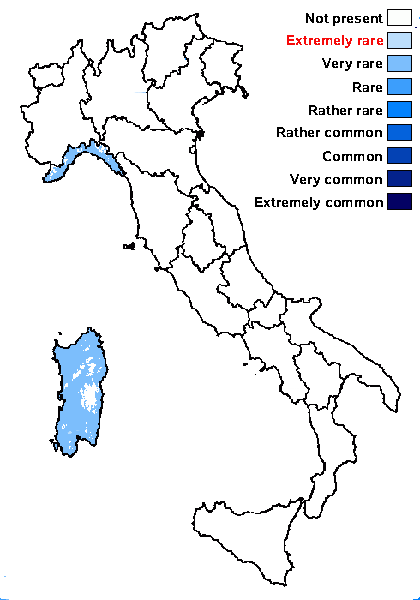
Predictive model
Herbarium samples
Growth form: Crustose
Substrata: rocks
Photobiont: green algae other than Trentepohlia
Reproductive strategy: mainly sexual
Most common in areas with a humid-warm climate (e.g. most of Tyrrenian Italy)
Pioneer species
Commonnes-rarity: (info)
Alpine belt: absent
Subalpine belt: absent
Oromediterranean belt: absent
Montane belt: absent
Submediterranean belt: very rare
Padanian area: absent
Humid submediterranean belt: very rare
Humid mediterranean belt: very rare
Dry mediterranean belt: very rare

Predictive model
| Herbarium samples |
 Index Fungorum
Index Fungorum
 GBIF
GBIF
